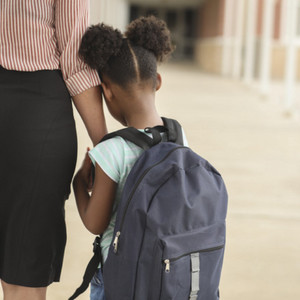How to Spot Human Trafficking in School
January is Human Trafficking Prevention Month. You may have read about it in the news, but what is human trafficking?
Human trafficking is a kind of modern-day slavery that involves the illegal transportation of human beings for purposes of sexual exploitation, labor, or any activities that benefit others financially. It is generally assumed to be a thing of the past, or something that only happens in less developed countries; however, it still takes place in the United States, even in your school and community. For example, this man in Minneapolis, MN was convicted of child sex trafficking.
There are many different types of human trafficking in the US, some of which include forced labor, forced marriage, sexual exploitation, pornography, exploitative begging, and more.
Traffickers often approach families in the form of neighbors, friends, and community members. They groom potential victims on the basis of easy accessibility by building relationships of trust, either online or in person. A trafficker may build a relationship with a victim by offering them gifts, emotional support, or prospects of becoming famous. Trafficking can also occur when a person is coerced into creating pornography, participating in virtual sex, or performing in sexual venues (parties or strip clubs).
The following are some signs that a student may be a victim of human trafficking:
- Clothes, makeup, nails, or hairstyles/extensions that make a child look older than they are or may be expensive beyond means
- Unverifiable home address or hotel room keys
- Fake or lack of proper identification
- Irregular school attendance
- Hanging out with or dating people who are much older, abusive, or controlling
- Unexplained large amounts of cash, jewelry or new clothes
- Signs of physical assault or unexplained injuries
If you suspect that a student is a victim of trafficking, or are unsure, please contact The National Trafficking Hotline at: 888-373-7888.
Renew a Teaching License by Professional Learning Board is committed to spreading awareness about human trafficking in schools. Consider this online abuse and trafficking prevention PD course ⇐ get it free, use code: PROTECTKIDS
2025 Editor’s Note: We’ve thoroughly updated this guide to reflect new trafficking indicators and digital safety risks affecting students. This revision incorporates the latest guidance from anti-trafficking organizations, school counselors, and educational experts. We’ve also added new sections on online exploitation prevention and updated reporting protocols in the training courseware, ensuring educators have current tools to help protect students. And we have included a free online professional development course for teachers.
 About the Author
About the Author
Ellen Paxton is a respected expert in education and best known as the Chief Learning Officer of Professional Learning Board. As a two-time National Board Certified Teacher, Ellen has successfully published and customized online professional development courses and Learning Management Systems for 20 years to help teachers meet their state continuing education renewal credit requirements. Through ProfessionalLearningBoard.com, RenewaTeachingLicense.com, and ConnectedPD.com. Ellen has established solutions and maintained partnerships with several accredited universities, higher education institutions, teachers’ unions and state Departments of Education while setting strategic direction that makes a difference and overseeing implementation of popular online PD.

Comments are closed.